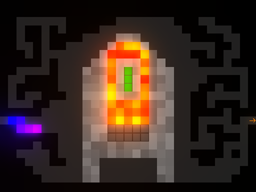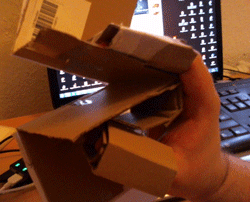A week ago, we had our February Mini Game Jam. One of the themes was “local multiplayer”, which perfectly fit the idea that I already had before arriving at the jam: Cutting up some anaglyph glasses to make red/red and cyan/cyan glasses and then make a multiplayer game where each player can only see half of the content.

Shoot all monsters of your color. Don’t let them touch you.
Your friend does the same.
Easy enough so far? Good.
Because you’ll also wear glasses in your color,
which means you can’t see your enemies at all!

A cooperative game about focus, teamwork, communication and fast reflexes –
for two players with red/red and cyan/cyan glasses and XBox360 controllers.
Play in your browser with the Unity Webplayer!
Download it for Windows!
Also, have some videos about how it works:
So – how does it work?
…surprisingly well! No really. But if you really don’t want to watch the first video, here’s how:
The yellow player fights the yellow monsters – he can’t interact with blue at all.

He wears red/red glasses though, and can’t see yellow at all…

…but if the blue player points his beam at one of the yellow monsters, the beam is BEHIND the monster, so it looks like this:

And now the yellow players knows where the monster is and can shoot it! All that remains now is good communication between the players and fast reflexes.
If you want to see it in action, you can watch this video.
The red/red and cyan/cyan glasses worked surprisingly well in extinguishing every single trace of yellow and cyan respectively, even in a projected image! (And in case you’re wondering, red images didn’t work, there were still faint ghost images.)
I really like how the game plays out. It’s interesting to see how people grow increasingly accustomed to playing it. Most start not talking at all and die a lot. Others focus solely on identifying the monsters for their partner and then die because they didn’t shoot their own enemies. Then, slowly, they start talking to each other: “There’s a monster here!”, “One there.”, “Move left! Left! Okay, you got it.” And later on some well-rehearsed teams start playing silently again for the most part, quickly finding the enemies their partner is pointing at.
I might visit the colored glasses mechanics again at a later jam.
Credits


















